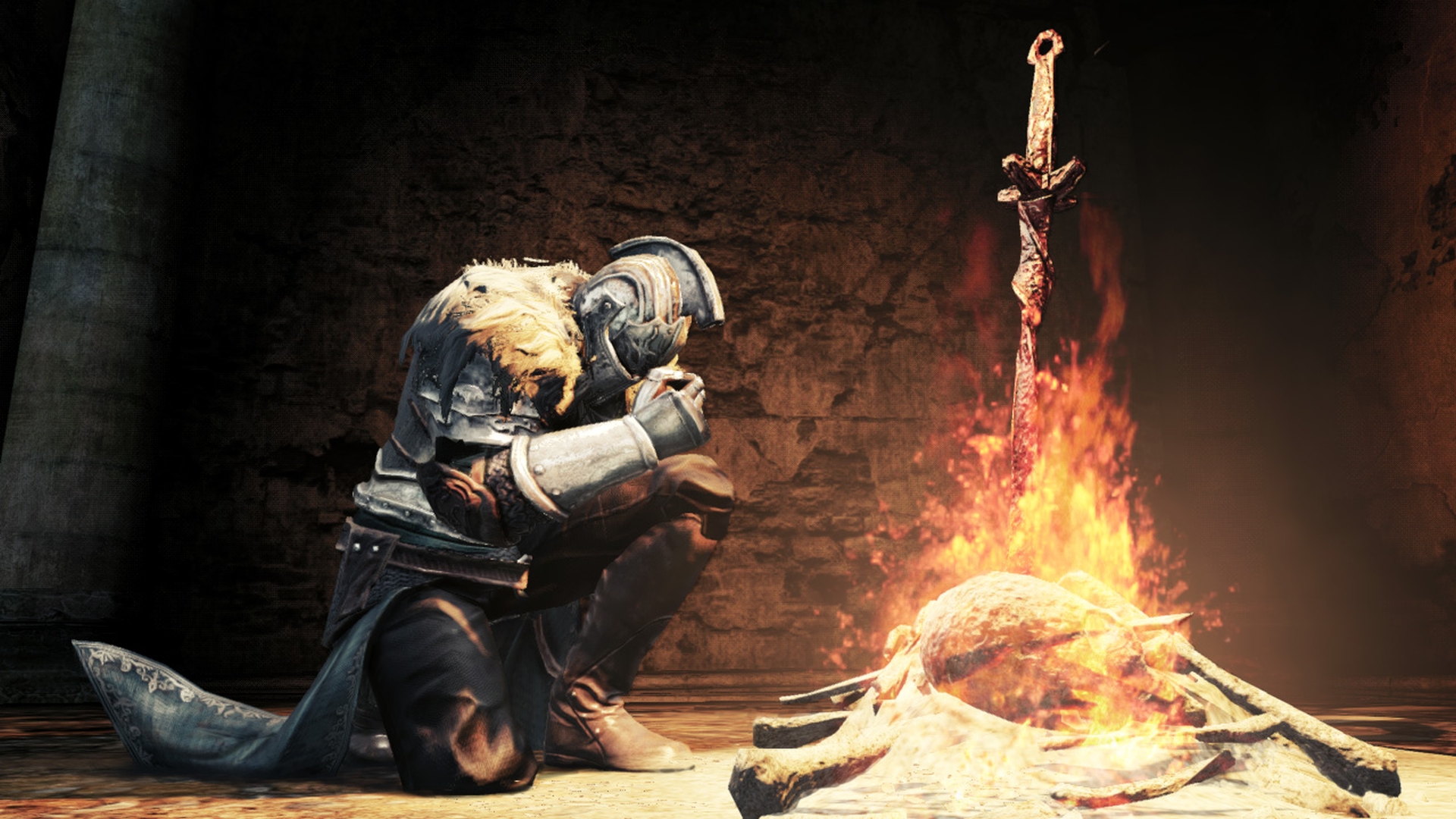GamesRadar+ Verdict
Pros
- +
Overcoming difficulty provides a fantastic sense of achievement
- +
Fascinating world that feels like a character all its own
- +
New gameplay elements make the Dark Souls experience more convenient
- +
but not easier
Cons
- -
Some bosses lack scale and eccentric design
Why you can trust GamesRadar+
Updated 4/24/14 - scroll to bottom for full PC impressions.
During my 54 hours with Dark Souls 2, I died 226 times. I know this courtesy of a worldwide death counter. But every time I took an axe to the face, or got murdered by somersaulting zombies, or mistakenly cartwheeled off a cliff, I learned something of value: that patience, as always, yields the greatest rewards. That bipedal hippos are really fucking deadly. That circle-strafing is not a one-size-fits-all tactic. But most importantly, that death is a great teacher.
As a newly branded undead in the kingdom of Drangleic, your goal is simple: gather as many souls as possible in the hopes of breaking your curse. In practice, this means exploring every bit of the vast world and fighting its many enemies and bosses. This process is a battle of inches, as enemy encounters are frequent and difficult, and the setting itself is no less threatening. Learning the attack patterns of foes, the locations of cleverly hidden traps, whether or not that gaping hole in the ground leads to treasure or will simply kill you should you step in it--all of this is accomplished through trial and error.
This difficult-by-necessity methodology, which rewards players for patience and internalizing lessons learned from past mistakes, is the crux of Dark Souls 2. It's a game that has no interest in hand-holding, instead opting to push you into the wild with little more than a butter knife and tasking you with figuring things out for yourself. Your heart will pound once you've stockpiled thousands of precious souls, a crucial form of currency, knowing that if you can just get a little bit further, you might find a temporary zone of safety. Or maybe you'll die and lose everything you've worked so hard to get--but next time, you'll know better. The adrenaline rush and sense of elation and empowerment you get from overcoming a particularly difficult enemy or obstacle is something no other series has replicated to this degree.
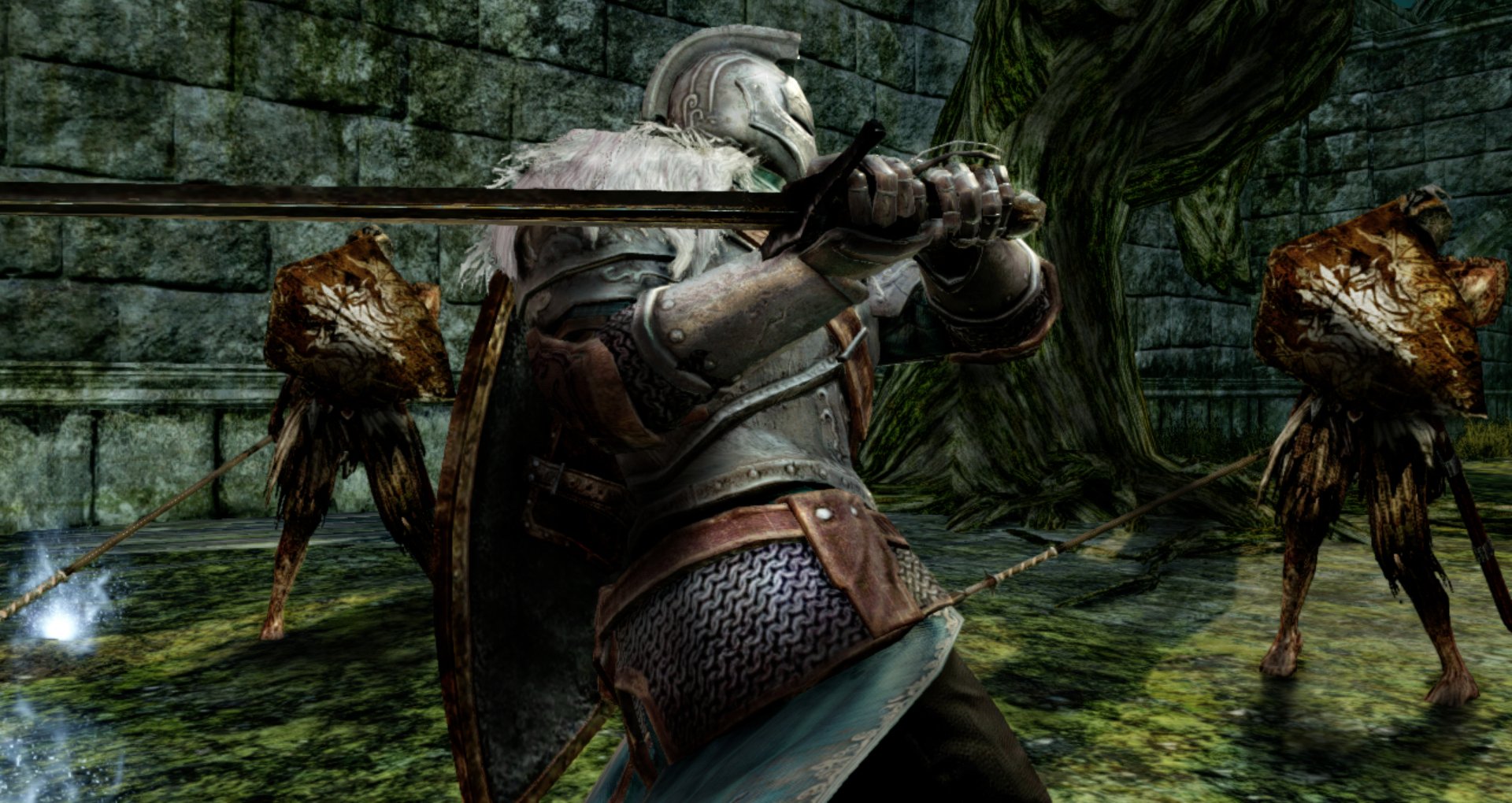
Dark Souls 2's world is an extremely dangerous place, one that forces you to be aware of your surroundings at all times. Because the environment plays an incredibly active role, it feels eerily real, like a character all its own. It pushes back in an attempt to halt your progress time and time again with thin pathways and other tricky obstacles. Some Dark Souls vets might feel put off by the fact that Drangleic is more of a central hub with many intricate, branching dead-end paths than it is a sprawling interconnected world, but each of these pathways offer tons of environmental variety, challenge, and self-contained secrets.
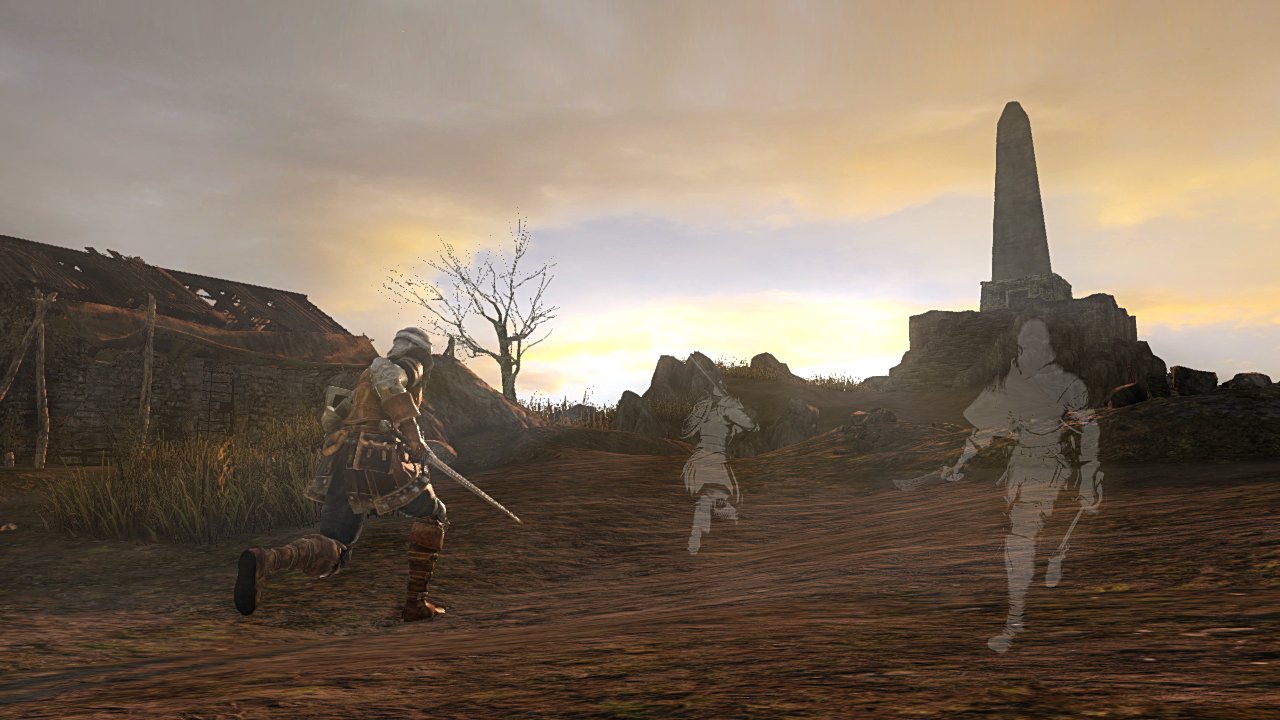
Dark Souls 2, like its predecessors, has unique online functionality. While you're playing through the game, you'll see the ghosts of other players who have fallen victim to Drangleic's many perils. You can summon them for help, or even invade their worlds to straight up murder them for a variety of rewards. It's an engaging system that succeeds in making you feel as though you're not alone during your journey.
Some are immensely perilous (to the same degree as the infamous Blighttown), but none feel frustratingly cheap. The layout of each feels meticulous and logical; I often cursed traps and enemies, but never blamed level design for my deaths. Even Drangleic's dark underground areas are enjoyable to explore thanks to the inclusion of torches, a surprisingly great addition that provides a mobile source of light. Using these produces a great deal of tension; yes, equipping one in your off-hand means you can be sure of your footing, but--as it turns out--it's rather difficult to block incoming attacks with a stick.
You'll get a great sense of discovery as you piece together the layout of each new zone, and having the ability to warp between the checkpoint-like bonfires right from the start is a godsend. You'll still fear overcommitting to exploration and losing your hard-earned souls, but you don't have to slog through 30 minutes of territory you've already memorized just to press on should you die.
Weekly digests, tales from the communities you love, and more
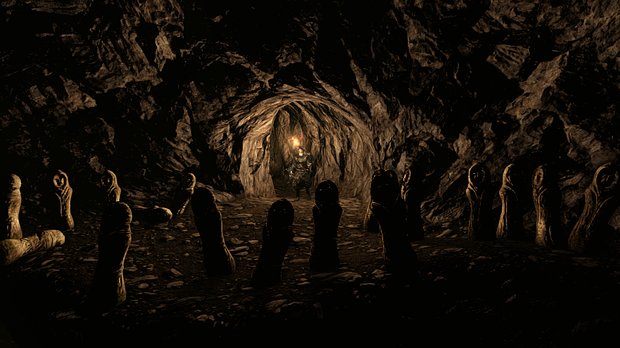
There's a much bigger emphasis on environmental interaction, too, which again adds to Drangleic's appeal. Sometimes you can kick down tree trunks to form bridges, or manipulate elements of the world that have a surprising effect on certain boss fights. For instance: I'm struggling with a boss whose arena is practically pitch black. Because I can hardly see her, she kills me in about five seconds flat. So I backtrack and explore the area just outside her den, and stumble upon some obscured oil gutters, which I proceed to catch on fire with a torch. BAM--now I can see that jerk plain as day. Every one of these interactions feels like finding an answer to your prayers, and they make Drangleic feel less like a decorative tapestry and more like a physical place.
One of the Souls' series most defining features is its intimidating boss encounters, of which Dark Souls 2 has many. Going toe-to-toe with these powerful foes provides a familiar rush of adrenaline, and beating them often results in an overwhelming sense of achievement. There are some on par with Dark Souls' more iconic foes, such as Ornstein & Smough, or Sif, the Great Grey Wolf (soon we'll be mentioning The Last Giant and The Rotten in the same breath), but a handful are just tall-ish dudes in bulky armor. These more underwhelming encounters are mechanically challenging, but lack scale or eccentricity.
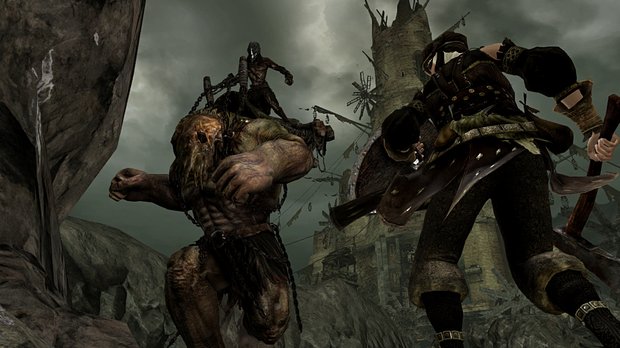
Most fights--including encounters with basic enemies--do a great job of forcing you out of old habits. Is your default strategy in Dark Souls to run up to enemies and strafe around them in circles to sidestep attacks? That works for the first few hours of Dark Souls 2, but you'll quickly realize that enemies and bosses have more variation in their movesets. Large, sweeping attacks are frequent, meaning you have to adapt and branch out into the game's other systems: parrying, roll dodging, etc. Not only does this further increase your skill, but you'll gain a deeper appreciation of all the mechanics at play once you're forced to explore them.
Dark Souls 2 also features some great quality of life changes that make the experience far more approachable. Should you figure out 50 hours into the game that you did a poor job of building your character, you can use a special item to respec instead of having to start the game over from scratch. These are limited in number to prevent players from abusing the system, but their inclusion means you can experiment with new builds without wasting days of your life on grinding. Other changes, such as a streamlined messaging system that makes communicating with other players a much quicker process, are just as welcome. None of these additions make Dark Souls 2 an easier game, but they do make it a far more convenient one.
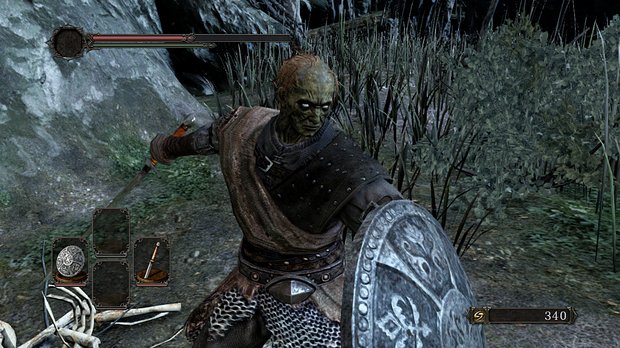
That's really what Dark Souls 2 is about--it takes everything that made the original so great, but expands on them in its own unique ways. Sure, not every single boss fight will impress, and you might be resistant to the world's hub-like structure, but these are minor notes in an otherwise phenomenal journey. Dark Souls 2 is an incredible game, one that demands alert play and rewards perseverance. You will die many times in many ways, but push on and you'll find this to be an excellent sequel that not only captures the essence of the original, but is a memorable experience in its own right.
Playing on PC
When the original Dark Souls launched on PC, it was an absolute mess. The mouse and keyboard controls were next to impossible to wrap your head around, and the only way you could adjust the resolution was via downloadable mod. Dark Souls 2 on PC, however, is a vastly better experience, even if the controls are still clunky.
The adjustable options for visual effects have seen significant improvement. You'll find everything you could've hoped for here: resolution adjustments, depth of field, and varying degrees of quality for textures, shadows, effects, character rendering, and more. It looks incredible on my midrange gaming rig, far more so than either of its console counterparts, and I experienced zero frame dips, screen tearing, or anything of the sort. It even runs at a noticeable 60 frames per second, making the on-screen action feel much smoother than it does on the PS3 or 360.
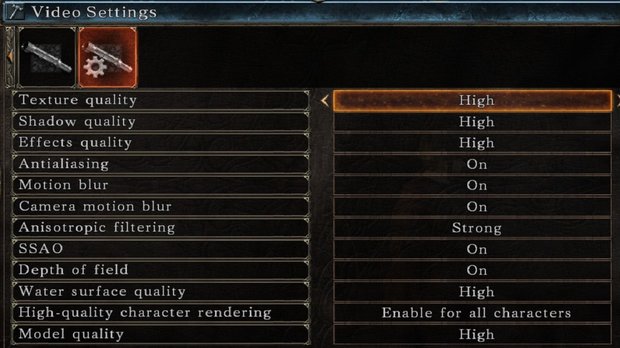
It's just a shame that level of quality doesn't extend to the mouse and keyboard controls. Though fully customizable, the default setup relies a lot on double-clicks, shift key modifiers, and overly complicated key presses to access all of your character's attacks and abilities. Plus, for some reason, button prompts only display gamepad controls, forcing you to dig through the keybind settings to figure out which keys do what. Even the menus are a bit annoying, as you have to click through unnecessary sub menus that were obviously built for gamepad thumbstick navigation. All of these issues, however, disappear the second you plug in a gamepad, which I highly recommend.
Dark Souls 2 on PC feels like a significantly more competent port than its predecessor. It looks great, runs smoothly, and comes packed with all the visual tweaks you could want. Sure, the mouse and keyboard controls are still underwhelming--but so long as you don't mind plugging in a gamepad, this is far and away the best version of Dark Souls 2.
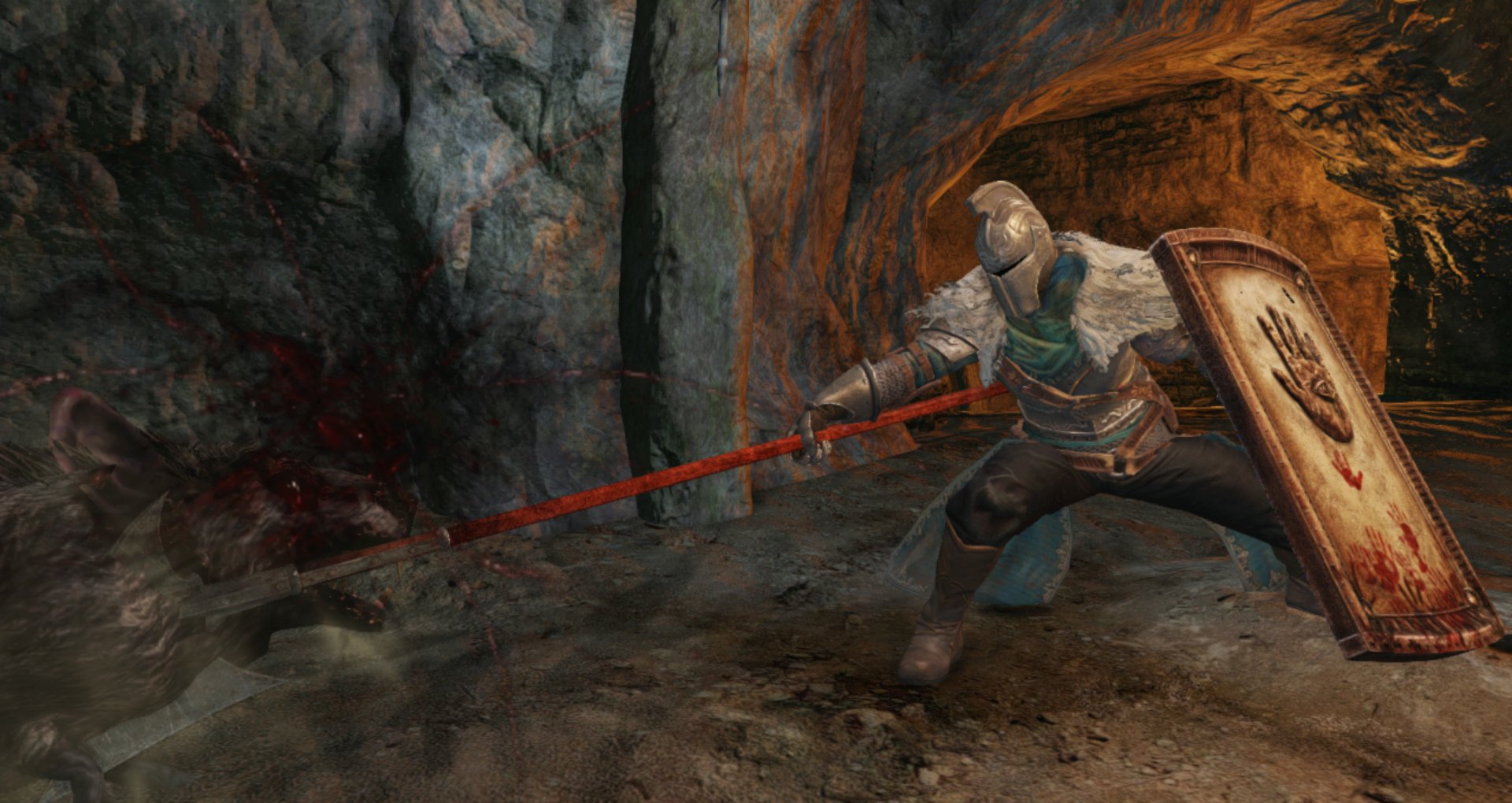
A fantastic sequel that lives up to its namesake, Dark Souls 2 is an action RPG that's challenging and rewarding in equal measure.
This game was reviewed on Xbox 360.
More info
| Genre | Role Playing |
| Description | Prepare to die all over again. |
| Platform | "PS4","Xbox One","Xbox 360","PS3","PC" |
| US censor rating | "Teen","Teen","Teen","Teen","Teen" |
| UK censor rating | "","","","","" |
| Alternative names | "Dark Souls 2" |
| Release date | 1 January 1970 (US), 1 January 1970 (UK) |

Ryan was once the Executive Editor of GamesRadar, before moving into the world of games development. He worked as a Brand Manager at EA, and then at Bethesda Softworks, before moving to 2K. He briefly went back to EA and is now the Director of Global Marketing Strategy at 2K.
